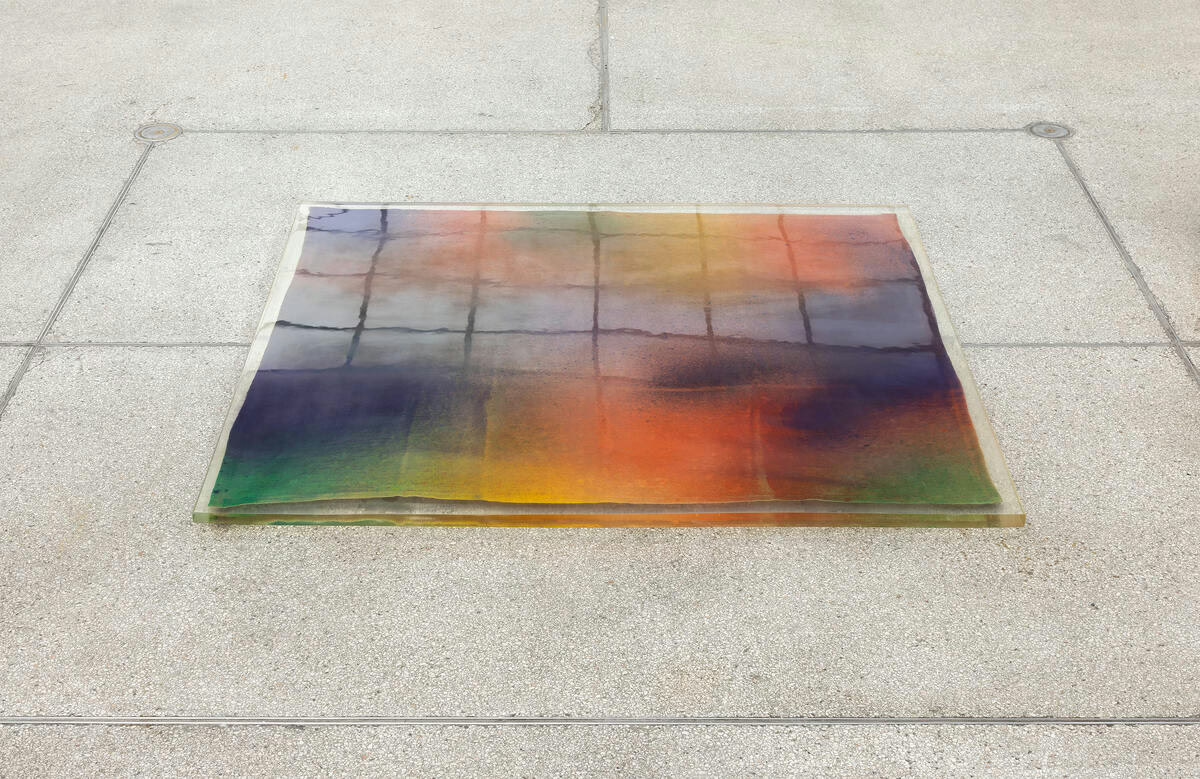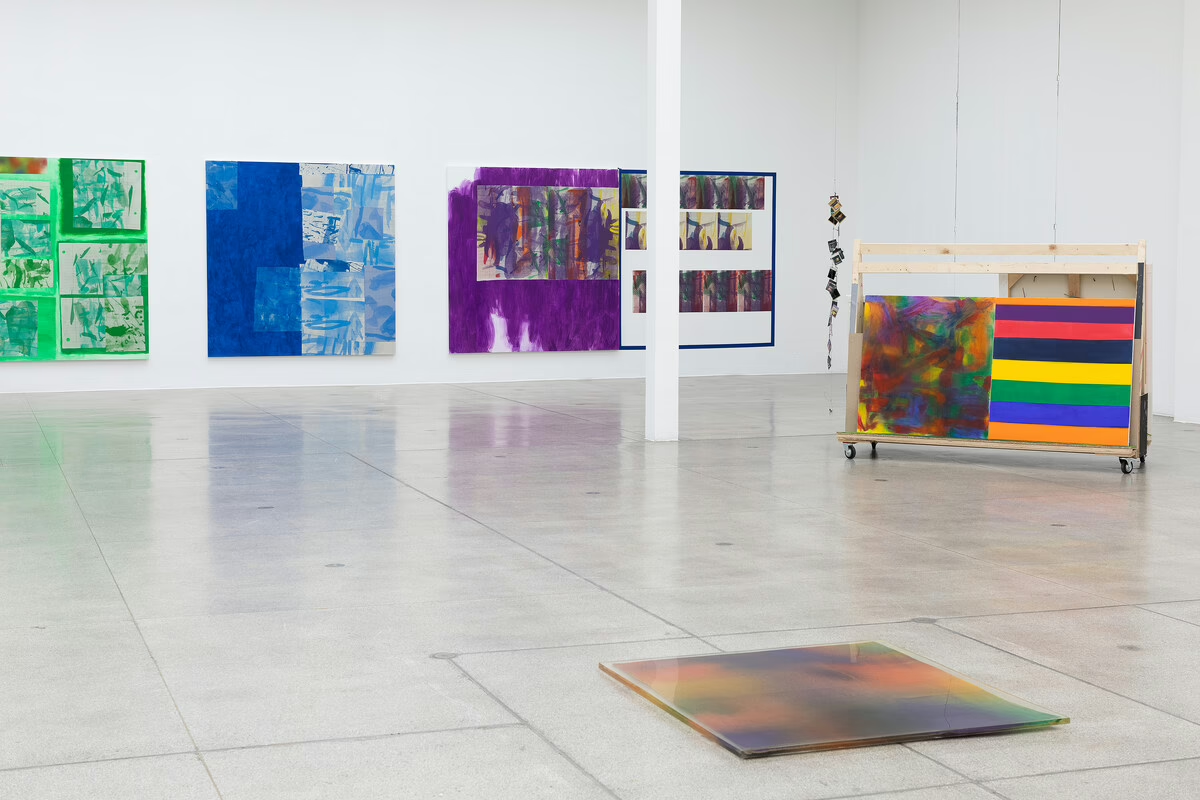Rochelle Feinstein – Forms of Abstraction

Rochelle Feinstein was a professor of painting and printmaking at the Yale School of Art until her retirement. Her work deals with different forms of abstraction, such as grid or color field painting, while at the same time making life bounce on modernist ideas of autonomous art.
For over forty years, the American artist has been developing an oeuvre that infiltrates abstract painting with political, social and ecological questions. In extensive, thematically interwoven groups of works, Feinstein cuts, transforms and arranges printed sign markings and collates them to paintings; in addition, she creates sculptures and prints from everyday materials. In “Zeit im Bild” she shows a selection of new works that revolve around the question of how canvas, color and gesture can be combined with the specific personal and public conditions of our time.
Where the modernists of the 20th century Although Feinstein’s abstractions are deeply intertwined with the world in all its chaotic diversity: Art here is not an escape from the horrors of life, not a separate area in which one could indulge in a “pre” and uninterested sensory experience. Rather, the works confront us with the confusion of our reality, with their contradictions, their offensiveness, their affects. That is why the title of the exhibition is also reminiscent of a news program, a humorous allusion to the diverse references from contemporary politics and pop culture with which Feinstein works.
“Two Maps” (2024), for example, deals with the run-out two-party system in the USA. The diptych “Tagged” (2019) is dominated by a rainbow-colored palette of sifted black and white photos of Italian boxing matches from the 1940s. The work refers to the raw quality of martial culture and graffiti and plays with colors that represent a hopeful symbol of empowerment, but also with the hollowing out of this message through its commercialization. “Golden Moments Silver Linings” (2021-24) consists of a slender column reminiscent of postcard stands found in front of kiosks in tourist places around the world. Attached to it are Polaroid photos of sunsets, which were collected via a Google search and edited with dynamic brushstrokes. The work evokes the longing for individuality and romance and at the same time exposes the exchangeability and cliché of this desire.
For Feinstein, painting is not a window into his own fantasy world, but basically located in the here and now. Their material conditions and the process of artistic creation are a decisive aspect of the presentation, for example when blue painter’s tape frames a series of works in the exhibition or canvases are not stretched on stretcher frames, but hang like textiles on the wall. In the series “Red Dawn” (2021-24) – an allusion to the dystopian action films with the same title, but also to the current cinema hit “Civil War” – the grid-like pattern of the cheap cover cloths, which were delivered folded from a huge Amazon warehouse, can still be seen. Still other works are presented on trolleys, with which paintings are normally brought from warehouses to exhibition rooms, but which then have to disappear quickly. Feinstein leaves no doubt that she is only too aware of the higher cultural values for which painting is supposed to stand. Their belief in the potential of their medium to work in the heart of our common world is unmistakable.
Rochelle Feinstein was born in the Bronx and lives and works in New York.
Read the full article on Kultur Online.

